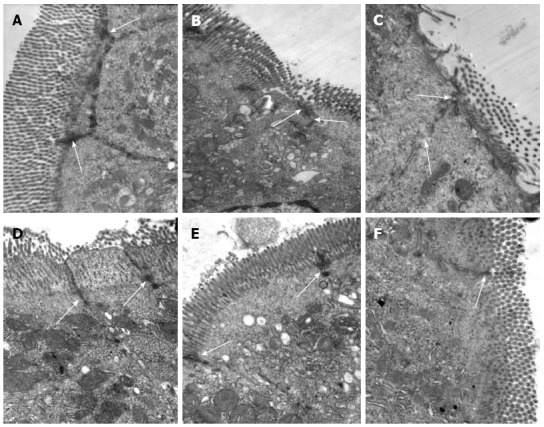Figure 5.

Bone-marrow mesenchymal stem cells and tumor necrosis factor-α blockade prevent ultrastructural pathological damage after intestinal ischemia/reperfusion injury. Transmission electron microscopy of the rat intestine after ischemia/reperfusion (I/R) injury. A: Epithelial cells and tight junctions (TJs) (arrows) were intact in the Sham group, × 30000; B: At 2 h after I/R injury, epithelial cells were swollen and shrunken, microvilli and organelles were normal, and TJs (arrows) were disrupted in the saline (NS) + I/R injury group, × 25000; C: At 6 h after I/R injury in the NS + I/R injury group, some microvilli were loose, TJs (arrows) were disrupted, and organelles were swollen with reduced electron density, × 30000; D: At 6 h after I/R injury and administration of bone-marrow mesenchymal stem cells, the microvilli and mitochondria of the endothelial cells were almost normal and TJs (arrows) were not disrupted, × 30000; E and F: TJs (arrows) between endothelial cells were intact 6 h after I/R injury in rats that received anti-tumor necrosis factor (TNF)-α IgG + I/R antibody (E, × 25000) or anti-TNF-α R1 antibody; (F, × 30000) before I/R injury.
